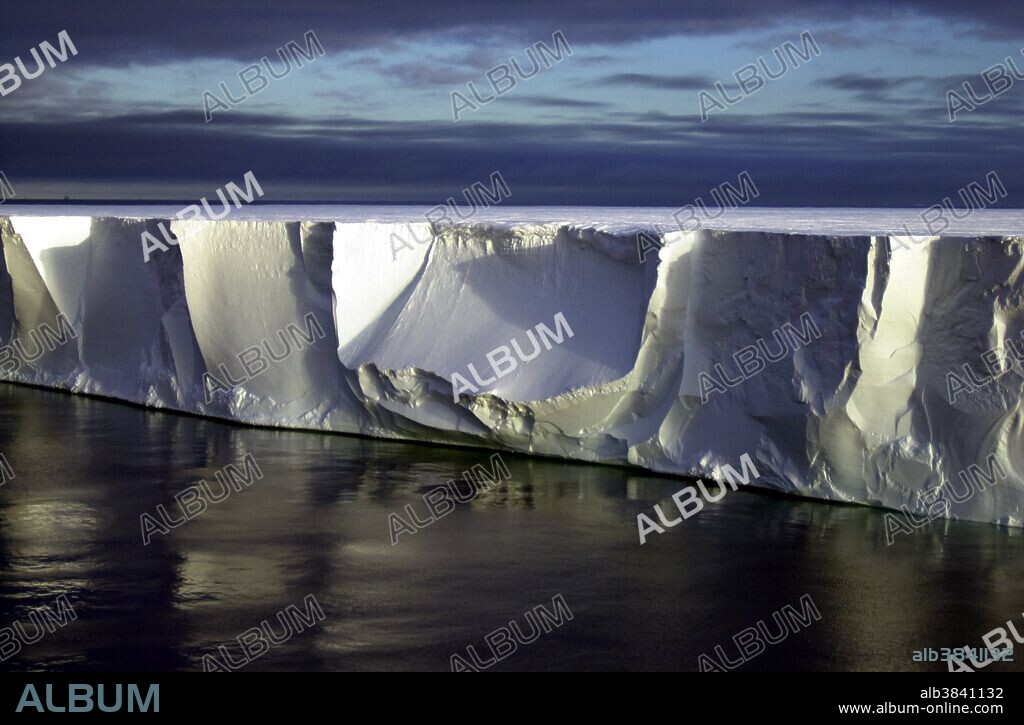alb3841132
Global Warming, Iceberg B-15A

|
Añadir a otro lightbox |
|
Añadir a otro lightbox |



¿Ya tienes cuenta? Iniciar sesión
¿No tienes cuenta? Regístrate
Compra esta imagen.
Selecciona el uso:

Título:
Global Warming, Iceberg B-15A
Descripción:
Ver traducción automática
Northern edge of the giant iceberg B-15A, located close to Ross Island, Antarctica. Iceberg B-15A is a fragment of a larger iceberg (B-15) that broke away from the Ross Ice Shelf in March 2000. Researchers have placed GPS, weather monitoring stations and four seismometers on different icebergs to track them. The goal is to learn more about what causes icebergs to calve, how and why they drift, what happens when the icebergs warm, and why they are producing previously unknown tremors that are picked up on seismometers as far away as Tahiti. In 2005 prevailing currents took B-15A past the Drygalski ice tongue; the collision broke off the tip of Drygalski in mid-April. Iceberg B-15A sailed on along the coast leaving McMurdo Sound until it ran aground off Cape Adare in Victoria Land, where it broke into several smaller pieces on Oct. 27/28, 2005. The largest piece is still named B-15A , additional pieces were named B-15P, B-15M and B-15N. It has since moved farther up north and broken up into more pieces.
Crédito:
Album / Science Source / NSF/Josh Landis
Autorizaciones:
Modelo: No - Propiedad: No
¿Preguntas relacionadas con los derechos?
¿Preguntas relacionadas con los derechos?
Tamaño imagen:
2000 x 1312 px | 7.5 MB
Tamaño impresión:
16.9 x 11.1 cm | 6.7 x 4.4 in (300 dpi)
Palabras clave:
ANTÁRTIDA, LA • AÑOS 2000 • CALENTAMIENTO GLOBAL • CIENCIA DE LA TIERRA • CIENCIA • FLOTA • HIELO • ICEBERG • INVESTIGACION • MAR • MARINA • MARINE • NIEVE • OCEANO • SEA • SIGLO XXI
 Pinterest
Pinterest Twitter
Twitter Facebook
Facebook Copiar enlace
Copiar enlace Email
Email
